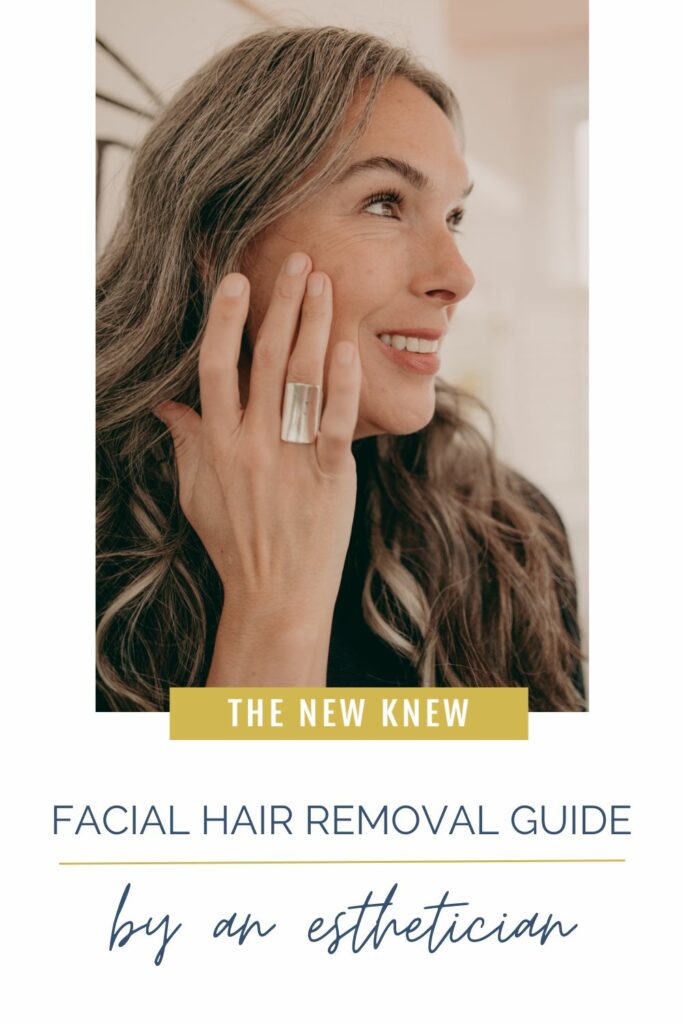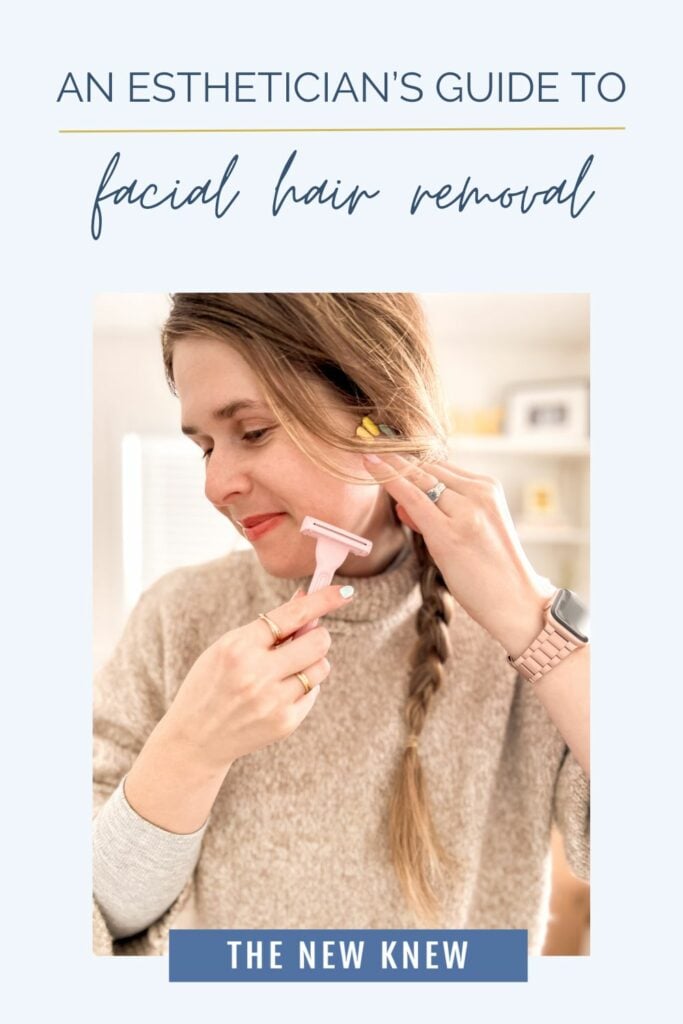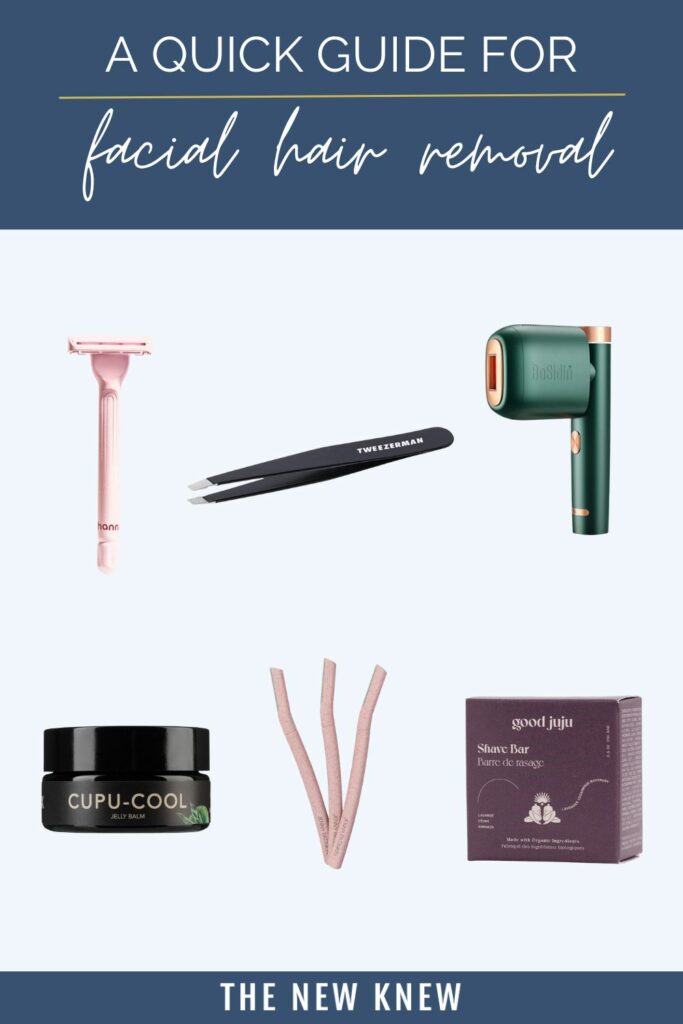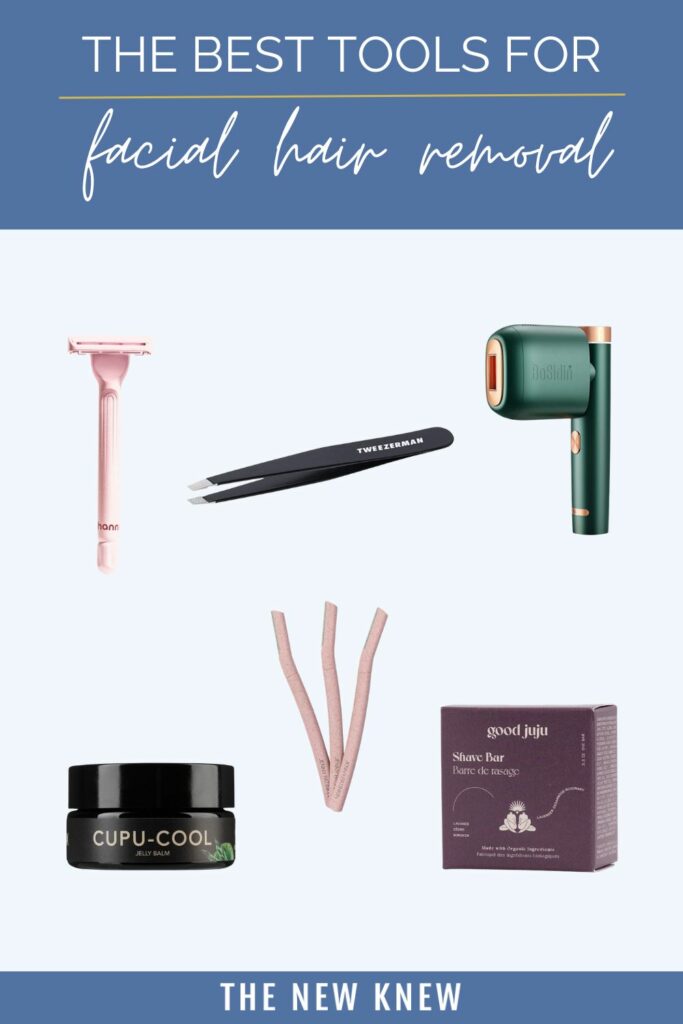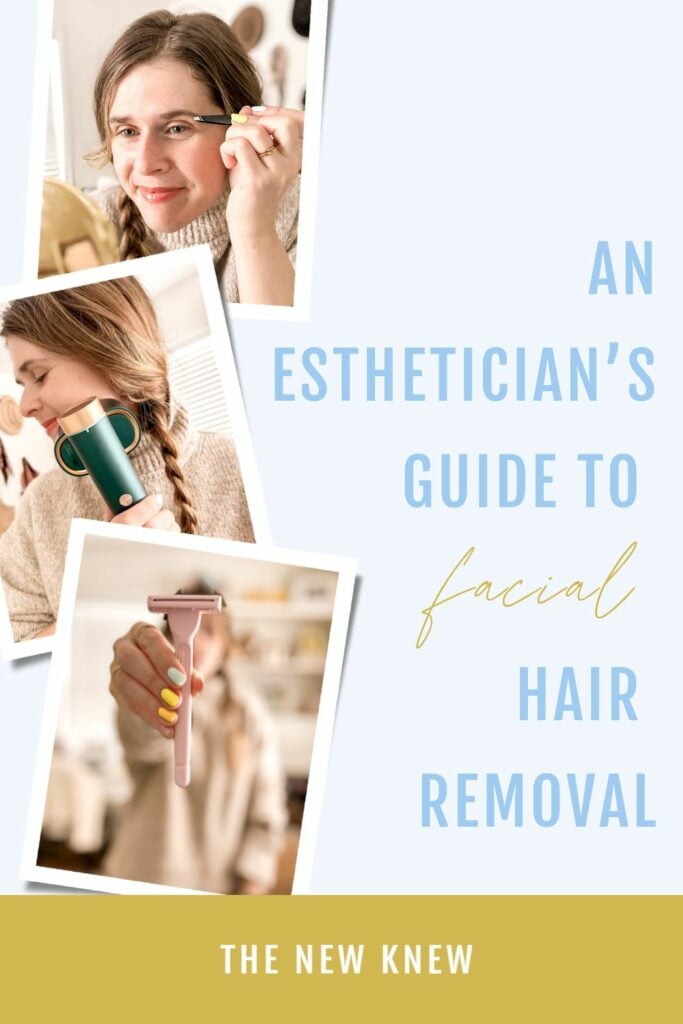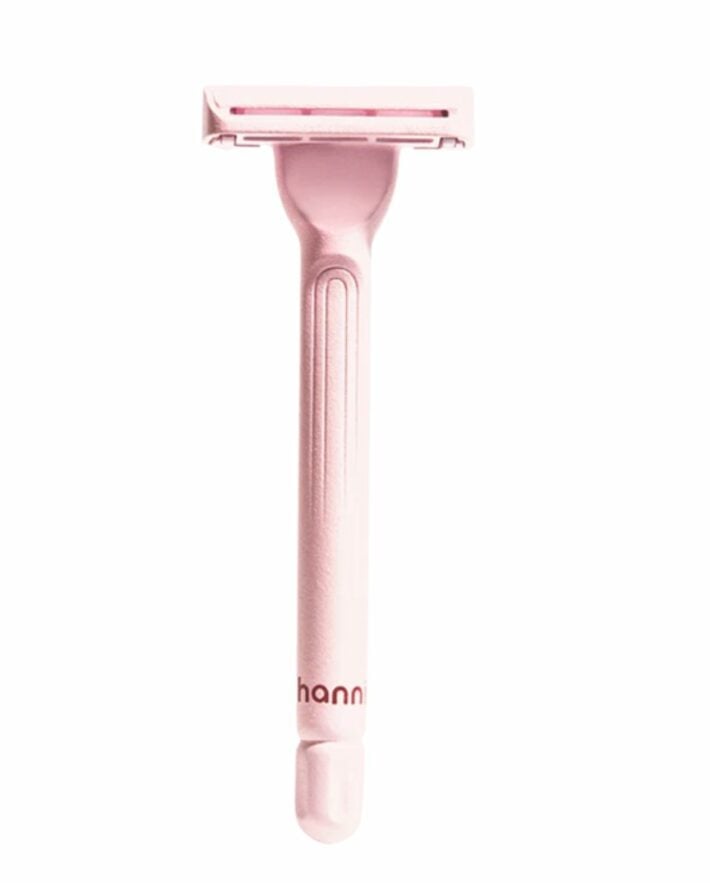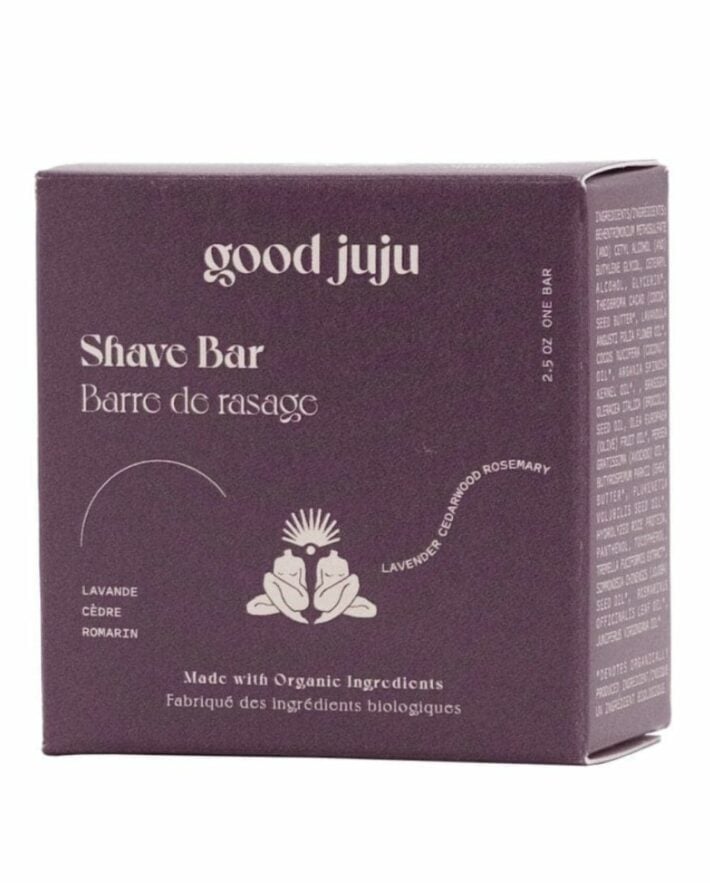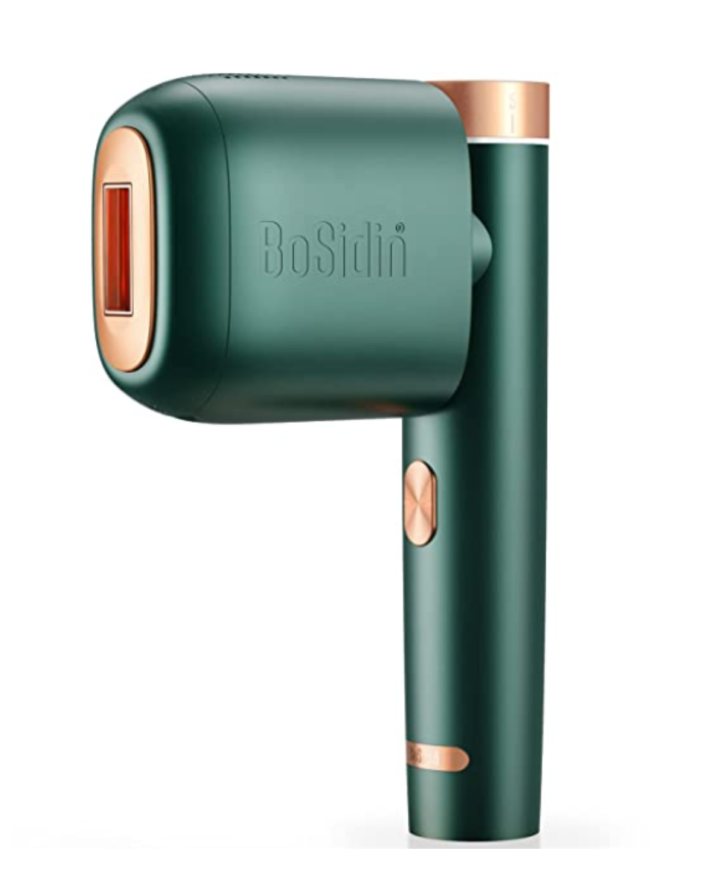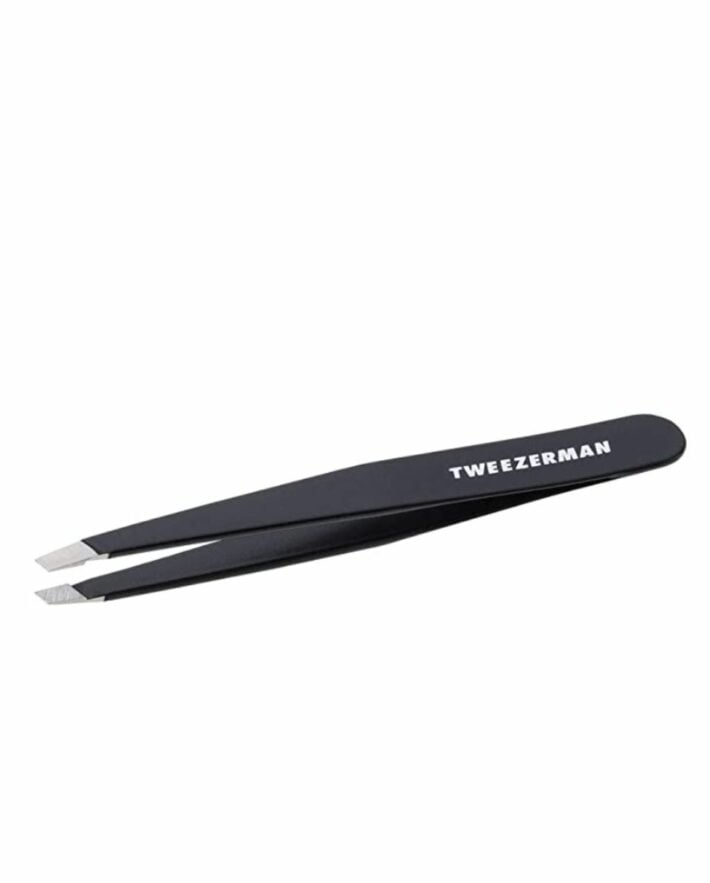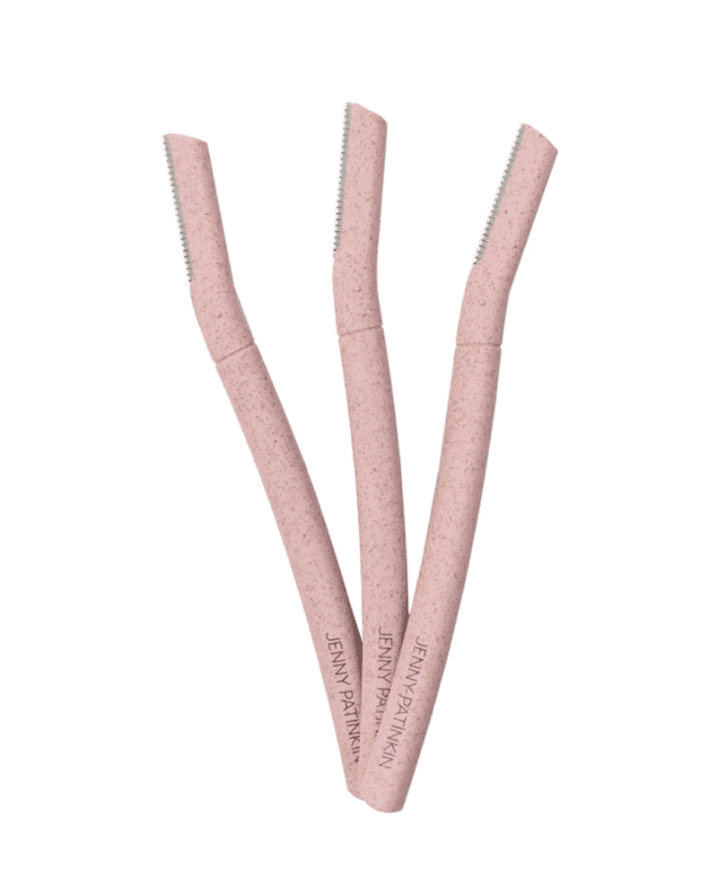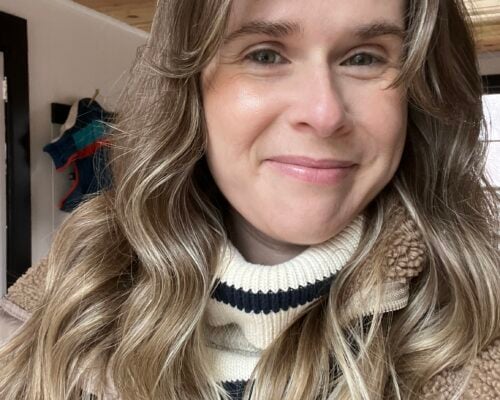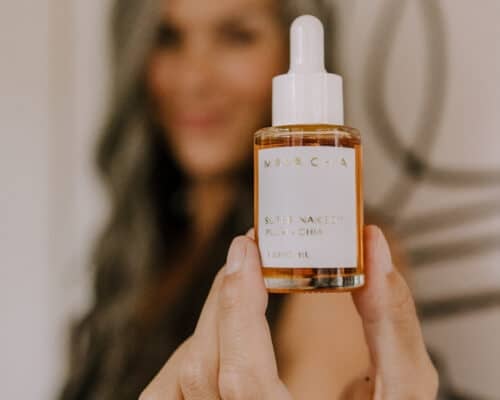Facial hair removal has been part of our personal grooming care and considered to be a cultural beauty standard for a long time. But let’s face it—it’s not the most pleasant of experiences. From waxing, sugaring and laser hair removal to dermaplaning, shaving, tweezing and more, the list of options is long…and can be confusing to determine what works best for your hair care needs. So, let’s discuss which ones work best for your skin and nail down some helpful tips for smooth results.
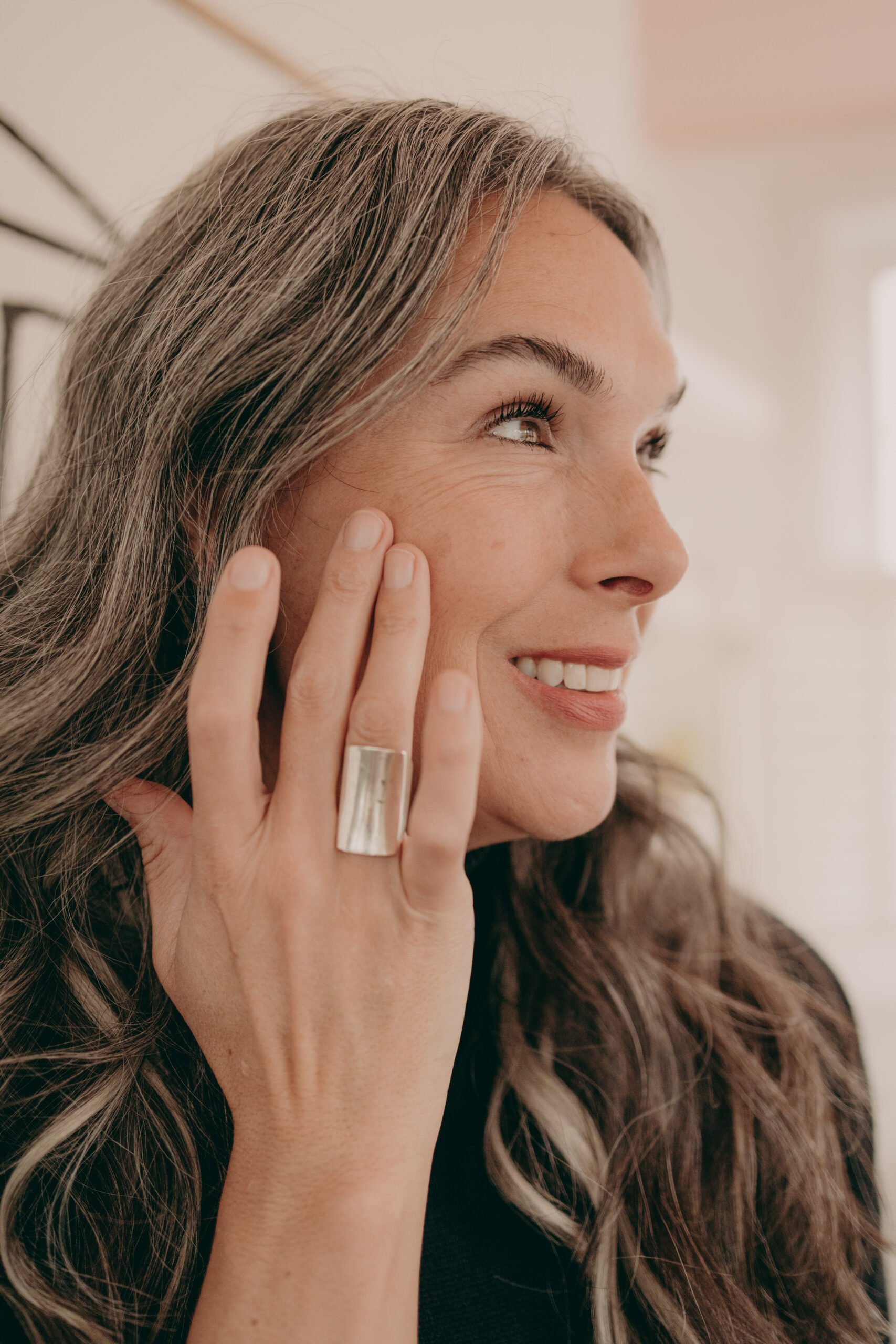
By: Hayley Wood L.E. N.T.P.
Meet the Expert
Hayley Wood
Hayley Wood is a licensed esthetician, nutritional therapy practitioner, and founder of Therapeutic Skin Coach. With 16 years of experience in holistic skincare and education, Hayley has a passion for skin health education and offers custom plant-based facials in Dallas, Texas as well as online consultations and classes.
IN THIS POST:
- A (super) brief history of hair removal
- Quick n dirty facial hair removal facts
- Facial hair removal myths
- Facial hair removal options (pros + cons)
- More facial hair removal tips
- Facial hair removal shopping guide
As a woman with French ancestry (light skin with dark hair) who grew up with the beauty standards of the 90s and 2000s, it’s safe to say that I’ve made my fair share of hair removal faux pas (I know I’m not alone). From experimenting with Nair cream to trying out all the different razors available (remember the Schick intuition blade with the shaving cream built in?!), and even getting electrolysis on my upper lip as a 12 year old, hair removal and me have had a journey. It’s even one of the top reasons I wanted to become an esthetician back in 2005—more resources to help with the maintenance of my hair removal routines!
Luckily, I stuck with it for more than that, but being an esthetician HAS helped me understand way more about facial hair removal than I expected. Let’s dive in.
RELATED: Maya Chia brow serum review.
A (super) brief history of hair removal
The concept of hair removal in our beauty culture has been around since ancient Roman times and the first razor can be traced back to ancient Egyptian times. However, the commercialization of hair removal targeted to women really kicked off around the 20th century as a way for razor companies to expand their market.
Should we be surprised that the hair removal push is tied to someone making money? No—and we shouldn’t forget many of the hair removal techniques that are popular today are also money-making endeavors. That doesn’t mean we all need to forgo all hair removal and start a commune, BUT it’s important to note that whatever you choose to do for yourself should be just that—FOR YOURSELF. Not for some culturally perpetuated beauty ideal that’s unnecessary and unhelpful.
And we can all have a different preference for how to groom our body and facial hair. The variety of options available now for how to groom can give you the choice for what’s best for you.
Quick n dirty facial hair removal facts
Not only have I learned how to make more thoughtful decisions regarding hair removal, but becoming an esthetician and helping others also introduced me to understanding different people’s struggles with hair removal. So to start, I want to acknowledge a few facts:
- Everyone has hair follicles all over their body, which covers us in different kinds of hair. Vellus hair, which is the peach fuzz we can all feel when brushing our hand on our faces, is different from terminal hairs, which provide us with the thicker and longer strands of hair we have on our eyebrows, eyelashes, head and various other places.
- Thickness and coarseness of hair makes a big difference in which type of hair removal you choose and the frequency with which you need it. What determines this is based on genetics as well as certain health conditions.
- Hair patterns and growth changes throughout our lifetime—which is what I focus on in any hair removal decision, because it’s not one-size-fits-all, forever and ever, amen.
RELATED: The best eyebrow makeup for gray eyebrows.
Facial hair removal myths
There are many hair removal myths that also immediately got debunked as soon as I entered beauty school. These are the ones that I still have to dispel to my clients. 👇
MYTH: If you do any hair removal, the hair comes back thicker and coarser. → This isn’t true for many people, but it also depends on your genetics, hormone health and previous hair removal experiences.
MYTH: Laser hair removal is permanent. → The only true permanent way to stop hair growth is by scarring over the hair follicle so it can have absolutely no growth. Instead, laser is often referred to as “permanent hair growth reduction”—but that only applies to the individuals where laser hair removal is appropriate for. More on that in a minute.
MYTH: Hair removal is more hygienic. → There are physiological benefits to having hair on our face and bodies. 😱 It helps protect us from different environmental triggers (especially nostril hair and eyelashes) and also helps prevent heat loss, among many other beneficial factors.
Facial hair removal options (pros + cons)
Because there are SO MANY options when it comes to facial hair removal, I’m gonna break down the most common types I’ve seen people try, plus give them a rating for how effective, gentle and long lasting the results are based on my professional and personal experiences. Bookmark this for the next time you’re wondering if you should tackle a rogue chin hair!
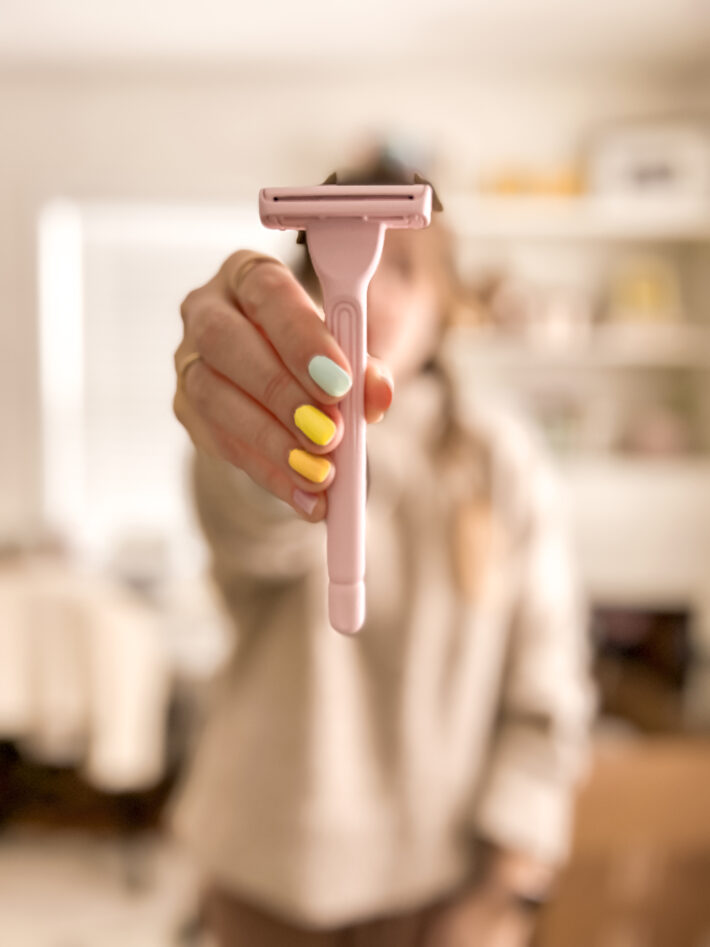
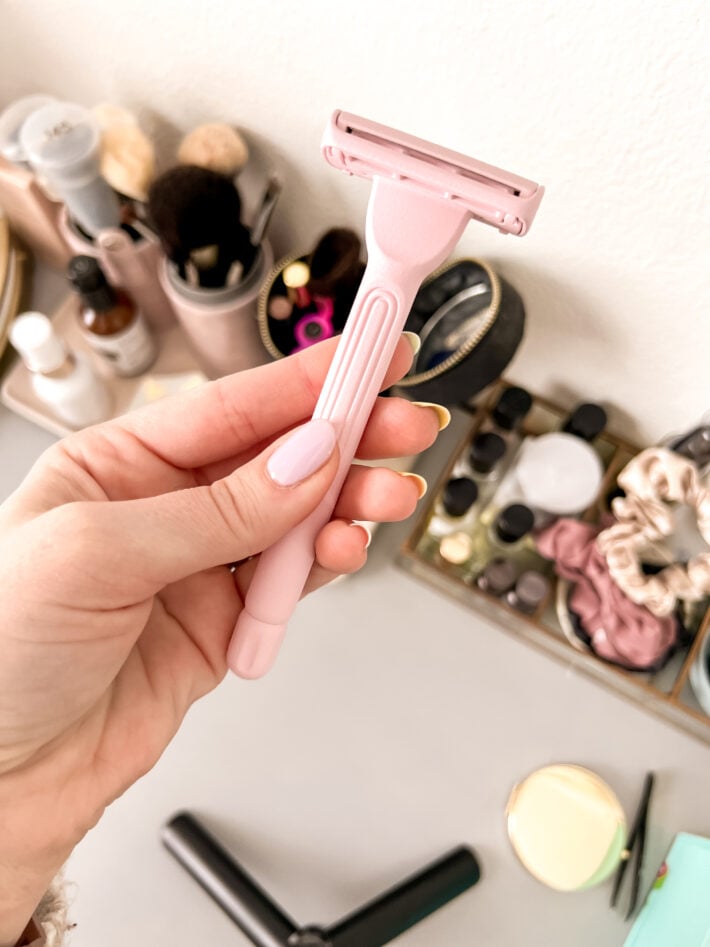
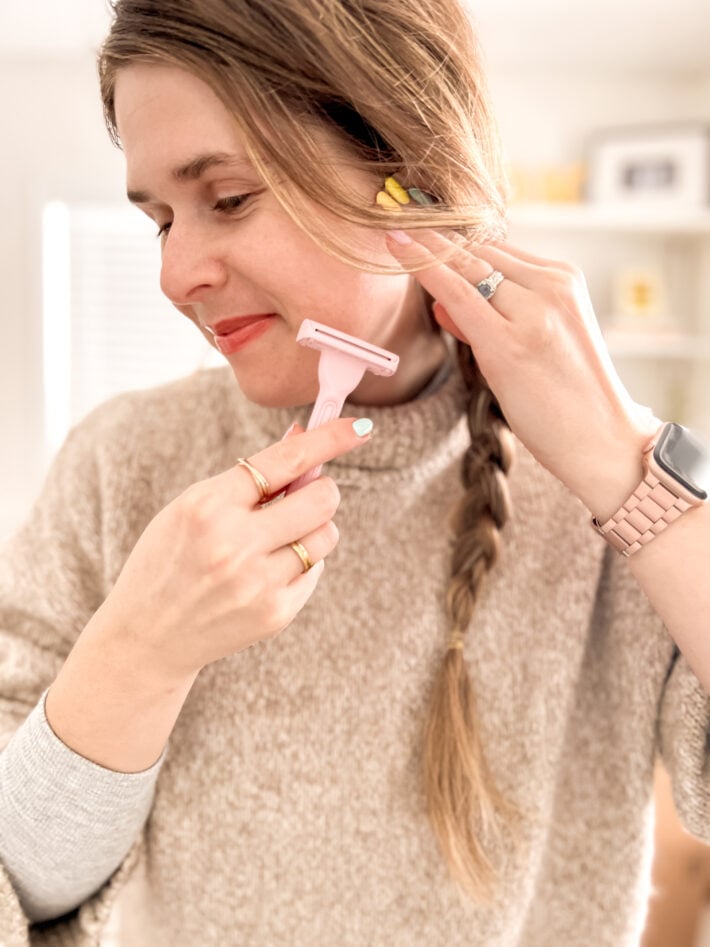
Shaving
Shaving is the easier and obvious choice for most facial hair removal for women. However, quality of blades and skin sensitivities can lead to unfortunate results with ingrown hairs, cuts on the skin and uneven removal.
As an option for facial hair removal, it’s a hard pass! Why? Because it simply cuts the hair at the surface layer of the skin instead of removing it from the follicle. This tends to give the shaved hair a blunt edge, which can enhance the appearance of the hair as it grows back.
TAKEAWAY: Leave the art of the face shave to the bearded folk as a facial hair removal technique.
RATING
- Effectiveness: 1 out of 5
- Gentleness: 2 out of 5
- Lasting Results: 2 out of 5
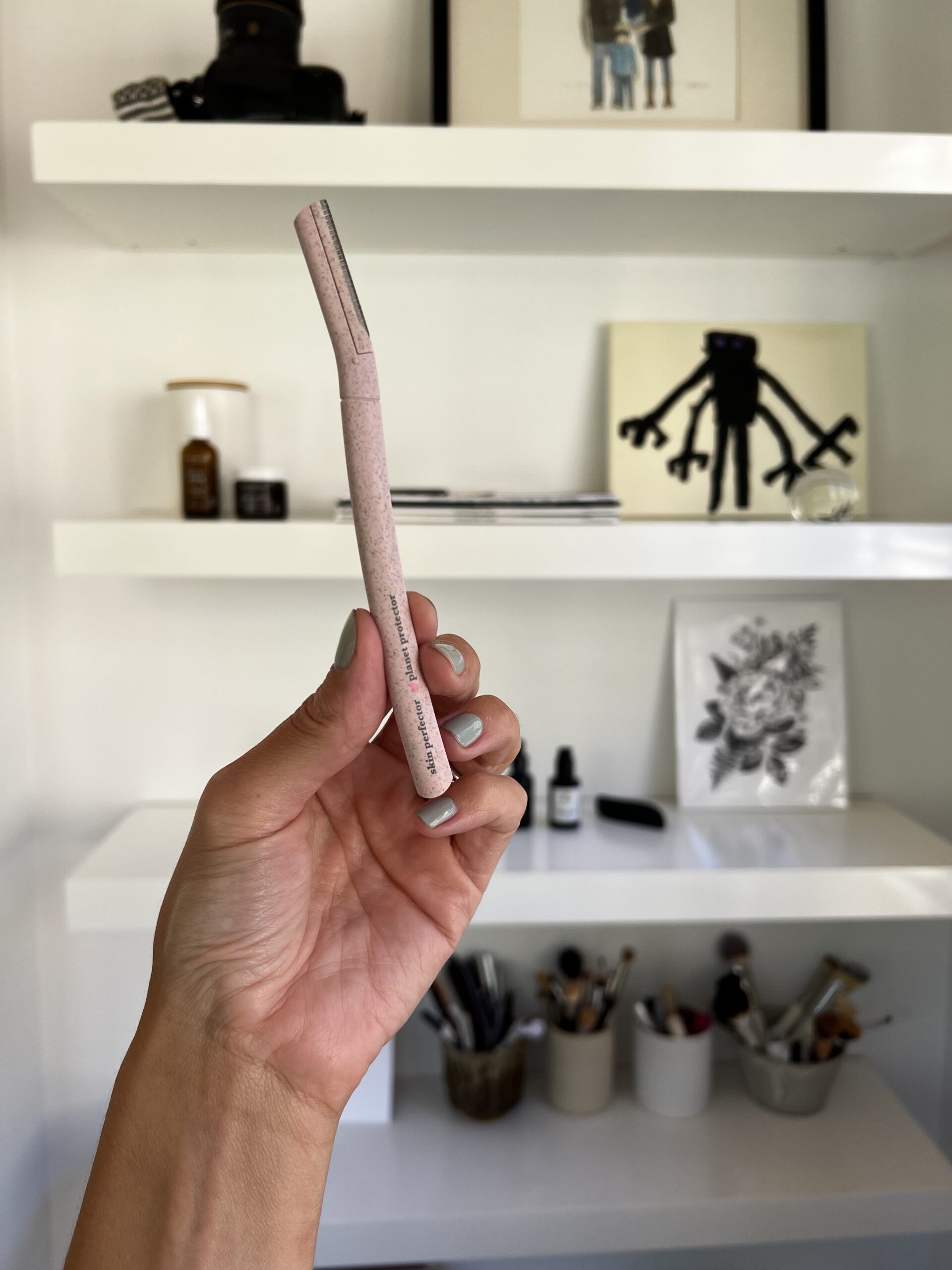
Dermaplaning
You may be wondering if dermaplaning is the same as shaving. The answer is sort of.
Dermaplaning is a technique used to help exfoliate the top superficial layer of hair and dead skin on the face. That means it will take off the vellus hairs and provide a nice exfoliation for your skin. If done correctly, your skin will look and feel very refreshed.
But (there’s always a but, isn’t there?), dermaplaning is not an ideal choice for people with breakouts (or sensitive skin), thick coarse hair or for the shaping of facial hair like eyebrows. And, if it’s not the best practice for your skin and hair type, you may feel a disruption in your overall skin’s barrier, which can lead to irritation over time.
TAKEAWAY: I would recommend this for a special event if the skin can tolerate it, but that’s about it.
RATING
- Effectiveness: 2 out of 5
- Gentleness: 4 out of 5
- Lasting Results: 1 out of 5
Waxing
Waxing is another form of hair removal that involves a melted wax applied to the skin to adhere to the hair for removal. It’s not like when you used to play with scotch tape on your arm growing up, but it can feel a bit like it!
Hair removal wax is traditionally made with beeswax and rosin, as well as different resins. Some may include added beneficial ingredients to help soothe skin such as azulene, lavender and zinc, while others have possible filler ingredients like perfume or colorants. If you’re concerned about ingredients (or have allergies or sensitivities), make sure to clarify what’s in the waxing compound before your appointment.
There are two types of wax that estheticians primarily use for hair removal: soft and hard. Soft wax utilizes a wax strip to help remove the hair in all areas of the body. Hard wax is a bit of a thicker application and the wax itself is used for removal (no strip needed). Hard wax is often recommended for facial waxing as it is generally a more suitable option for sensitive skin.
The frequency of waxing can vary depending on the person, but it’s typically suggested to do every 2-6 weeks.
TAKEAWAY: The results vary depending on the technician’s technique, the clients skin’s sensitivity and what type of after-care the practitioner provides, such as a calming/cooling globe or calming tea tree oil blend.
RATING
- Effectiveness: 7/10 (if you can tolerate the discomfort, the result is usually a smooth finish)
- Gentleness: 3/10 (it IS taking hair out of your skin, so it does tend to hurt)
- Lasting Results: 4/10 (it can last a while, but it does come back)
Sugaring
Sugaring is a great option if you are concerned about ingredients because the typical sugaring formula includes sugar, water and lemon. You can literally eat most sugaring pastes, which I wouldn’t recommend, but it’s nice to know it’s safe enough!
For many, sugaring is not only an effective form of hair removal, but it’s also not as irritating, especially on the face. It may be slightly more time consuming than waxing, but the cost is about the same. The maintenance appointments are also aligned with your growth cycle.
TAKEAWAY: Sugaring is overall a great option to explore as long as you are not experiencing inflammation in the skin already.
RATING
- Effectiveness: 5 out of 5
- Gentleness: 3 out of 5
- Lasting Results: 3 out of 5
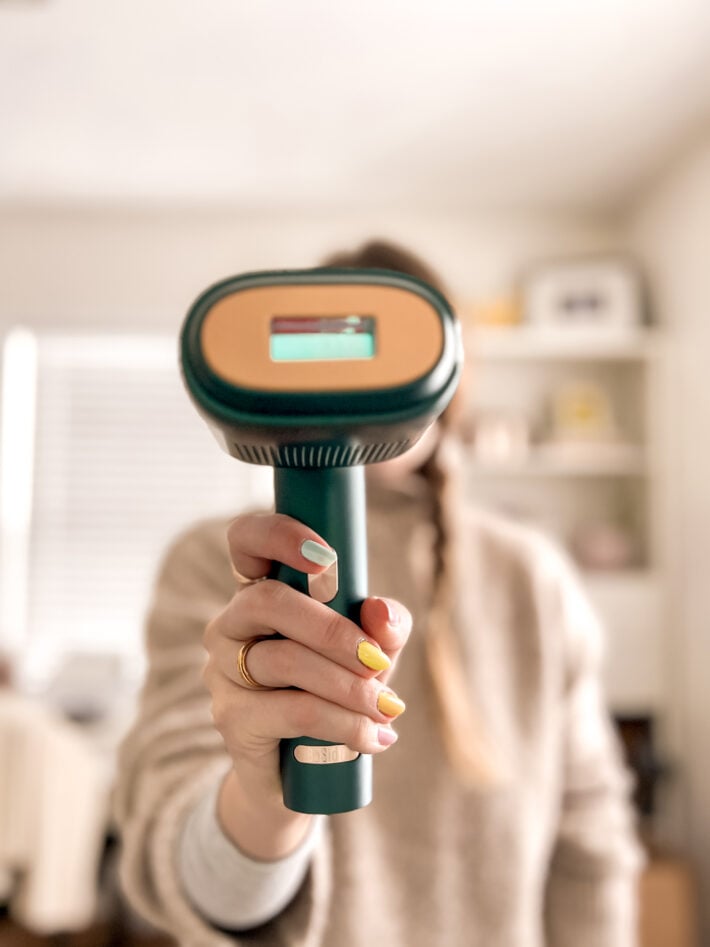
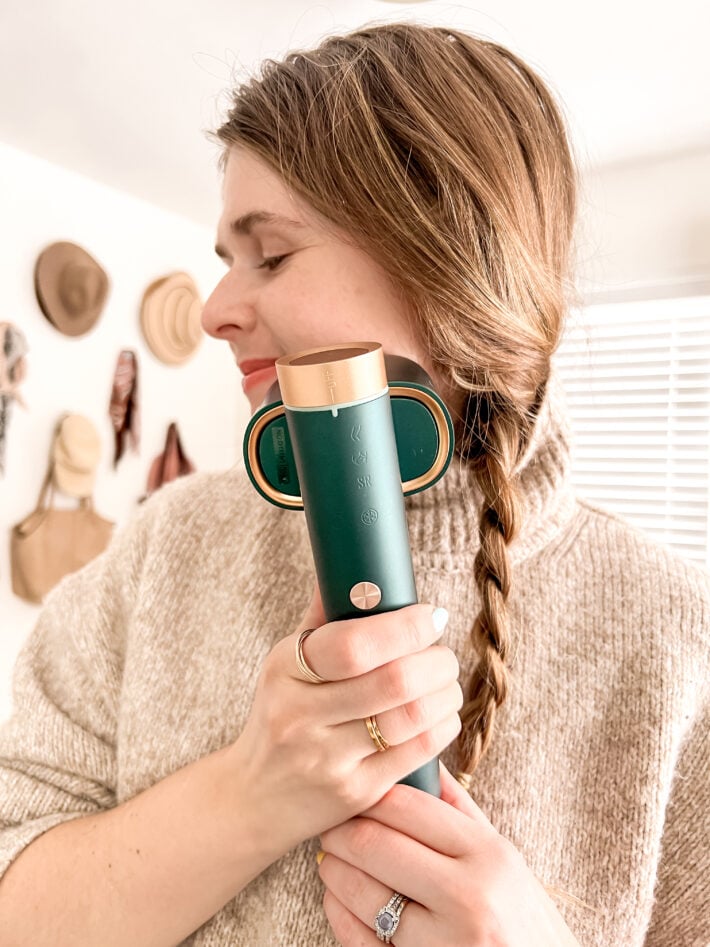
Laser Hair Removal
In regards to facial hair removal, I would recommend avoiding laser hair removal. Why? Because I happen to have a permanent scar in my eyebrow from an accidental laser near my eyebrow so I live to tell the tale of it’s not worth it. It’s effective and can often be a great option for body hair removal, but it can be a little too strong for the face.
Plus the prep includes shaving the area and the laser pulses can feel pretty sharp. It also makes your skin far more sensitive to the sun, so you would need to take extra precautions with SPF.
I’m sure there are some cases in which laser hair removal for the face is ideal, but for the most part, it’s overpromising on its results. It can also be costly, require multiple consecutive appointments (plus maintenance appointments), and also not be ideal for individuals with darker skin tones as the lasers aren’t able to detect the hair as well.
TAKEAWAY: For the most part, laser hair removal for the face is over-promising its results—it can be painful, cause sun sensitivity and doesn’t work for those with darker skin tones.
RATING
- Effectiveness: 4 out of 5
- Gentleness: 1 out of 5
- Lasting Results: 4 out of 5
Electrolysis
The 12-year-old in me shutters at the thought of electrolysis because I was so worried about getting rid of my little mustache that I didn’t focus on how much I would grow into my face, body, and yes, my body hair. Plus the claim that it is permanent hair removal can be debunked immediately by looking at my face. 😩
That being said, electrolysis is also an older technology that has been used for hair removal for over 40 years. It can work by destroying the growth center of your hair follicle with heat or chemical energy. It is relatively painless and can be pretty easy to recover from. It can work better than laser hair removal, as it’s suitable for all skin tones, but like laser hair removal requires multiple appointments and can be costly.
TAKEAWAY: Electrolysis is not permanent, its effectiveness varies and there are more advanced technologies now.
RATING
- Effectiveness: 3 out of 5
- Gentleness: 3 out of 5
- Lasting Results: 3 out of 5
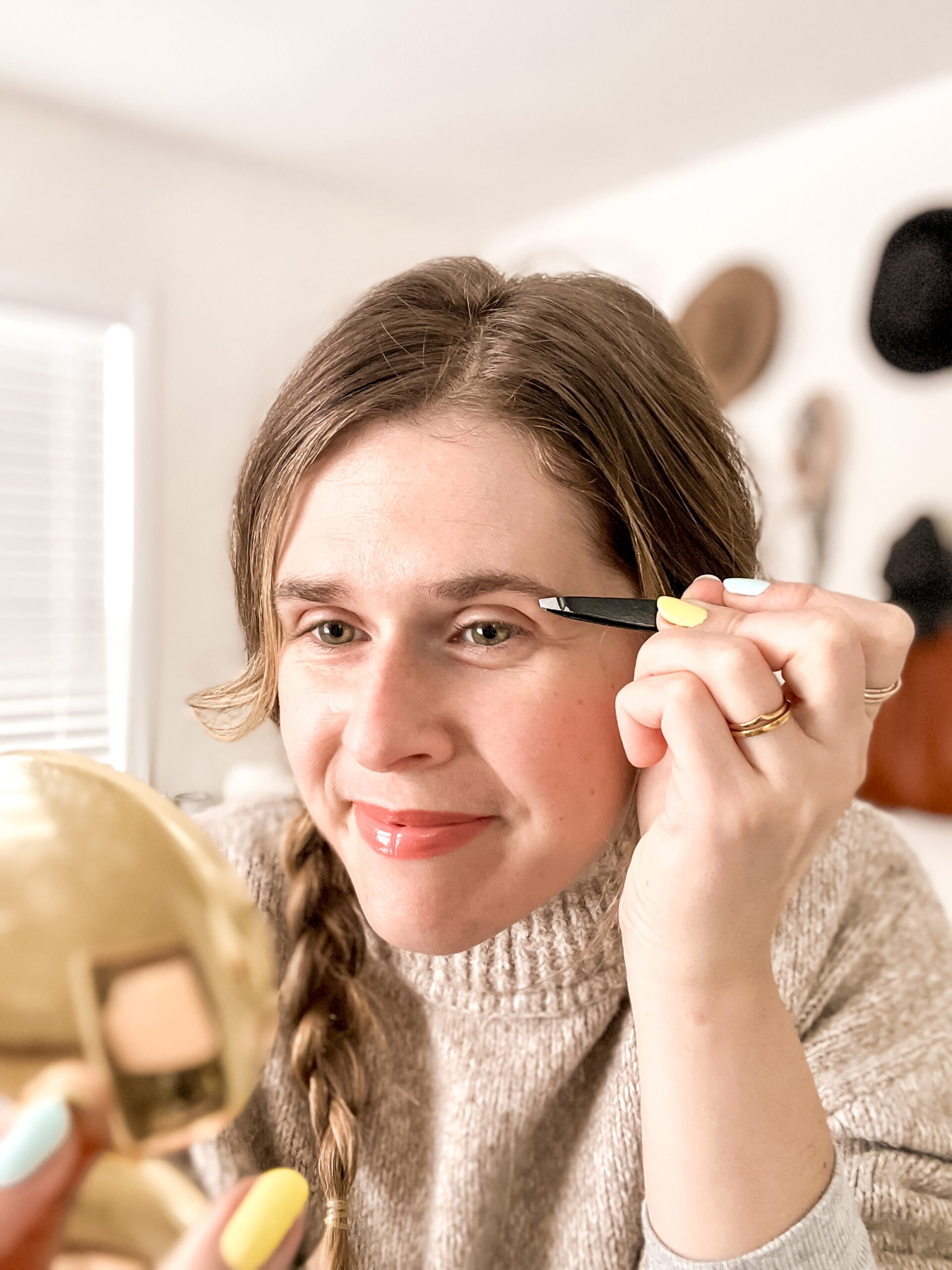
Tweezing
Tweezing is a wonderful option for general maintenance and low effort for facial hair grooming. However, tweezing without guidance can often lead to overly thin and uneven eyebrows, and a sore upper lip. It can also possibly irritate the hair follicle of a coarse chin hair.
It’s an option that many of us use in between professional hair removal services, however, it can get out of hand if you don’t have a plan when picking up your tweezers. Pro tip: Always disinfect and store your tweezers in a safe place so they stay sharp and clean.
TAKEAWAY: It’s a good technique for maintenance of a few rogue hairs, but it’s easy to get overzealous and it can cause irritation.
RATING
- Effectiveness: 3 out of 5
- Gentleness: 4 out of 5
- Lasting Results: 3 out of 5
Threading
Threading is an alternative to tweezing for facial hair removal that is much more effective. It’s a method of hair removal that originated in Iran, Indus Valley and India that involves using a thin doubled thread, usually cotton or polyester, twisted to remove the hair from an area. This is a process that is usually reserved for facial hair as it is precise.
Cost wise, it’s about the same as waxing and is usually the same in terms of discomfort as waxing or tweezing. Many have found that threading is a better alternative for facial hair removal if waxing creates irritation for them. The results of shaping an eyebrow with threading may vary depending on the technician, so make sure to communicate your brow goals before sitting in a threader’s chair.
TAKEAWAY: A great alternative to waxing or tweezing, especially for something like eyebrow shaping.
RATING
- Effectiveness: 4 out of 5
- Gentleness: 3 out of 5
- Lasting Results: 3 out of 5
More facial hair removal tips
When should I schedule my facial hair removal appointment?
Humans are funny because we have random hair growth and shedding times with all of our hair. It starts with a growth phase called Anagen, a transitional phase called Catagen and a resting phase called Telagen. You can usually tell you’re in your Telagen phase if you see a white bulb at the root of your hair when you remove it. That white bulb is filled with Keratin, which is a protein to help stimulate new growth.
When you first start your hair removal journey, it’s important to learn the difference between your vellus hairs and terminal hairs. The terminal hairs will have a clearer distinction for which phase you may be in. The best phase to remove hair is during the Anagen phase because hair is the most visible.
What should I avoid at my facial hair removal appointment?
There are contraindications to most hair removal procedures. These include certain medications that may make you photosensitive such as birth control, acne medications and other prescriptions. Hair removal on the face should also be avoided if you recently had a sunburn, a chemical peel or other facial procedure involving exfoliation, wounding (like microneedling) or extractions.
If the skin is currently in a state of inflammation such as a rash, breakouts, or simply uncomfortable to the touch—facial hair removal should be avoided until those symptoms subside. Please reach out to your hair removal specialist for personalized support if you are unsure about contraindications prior to your appointment.
***A huge red flag is not having a consultation prior to your appointment about potential contraindications for hair removal. If this happens, run! It’s not worth risking your face for a quick and cheap solution as the wrong approach can lead to hypersensitivity, hyperpigmentation, skin lifting, scarring or a skin purge (aka breakout).
How should I prep for facial hair removal?
Prepping for a facial hair removal appointment does not need to be complicated, but putting some thought into it can help provide lasting and smooth results. Make sure to avoid retinoids, prescription skincare and exfoliation of the skin at least 2 weeks before your appointment.
Post hair removal care tips
In order to make sure your skin recovers nicely post hair removal, it is important to calm the skin by avoiding active skincare, the sun, excess heat and overall dehydration. Depending on your skin concerns, you may want to use post-care topicals recommended by your esthetician. These usually are calming and cooling to help reduce heat and inflammation while also working to prevent any post-hair removal bumps. Aftercare can look different for each service, so make sure to inquire.
There’s no perfect hair removal for everyone, but that’s because we’re all different. You may need to experiment with a few forms of hair removal in order to discover what works best for your skin type, hair type and wallet.
Don’t be afraid to ask your hair removal specialist questions prior to your first appointment in order to feel confident and supported during your service.
Facial hair removal shopping guide
Products we recommend for hair removal.
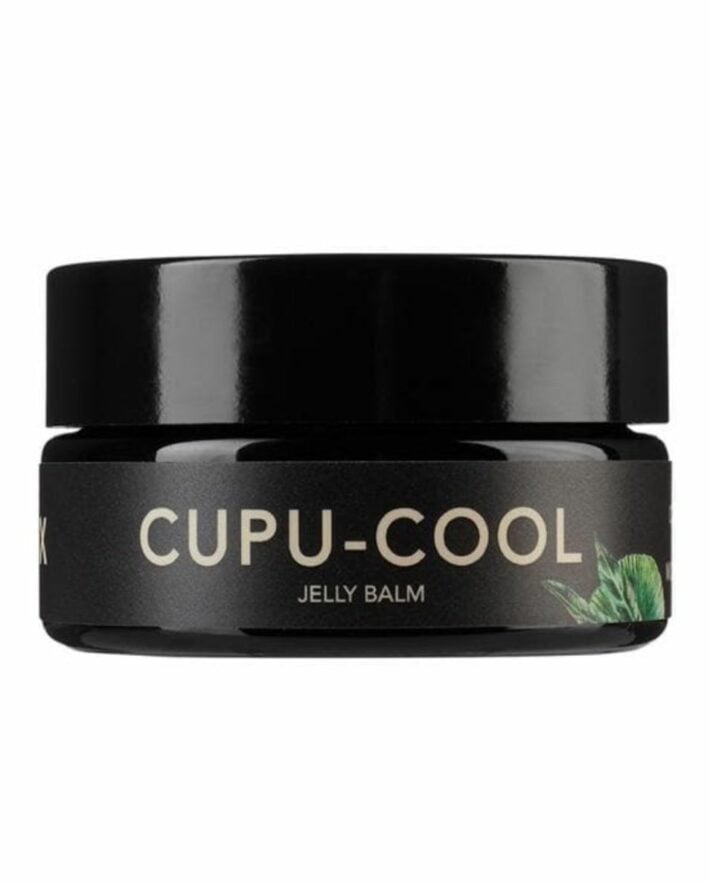
Which hair removal techniques have you tried and what’s worked for you?
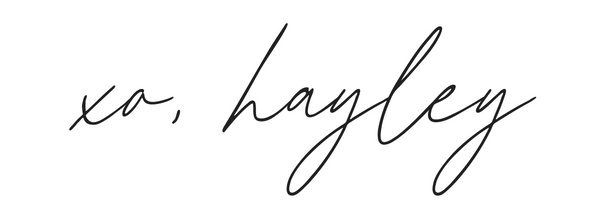
TNK Team Note: This article contains affiliate links. TNK uses affiliate links as a source for revenue to fund operations of the business and to be less dependent on branded content. TNK stands behind all product recommendations. Still have questions about these links or our process? Feel free to email us.

